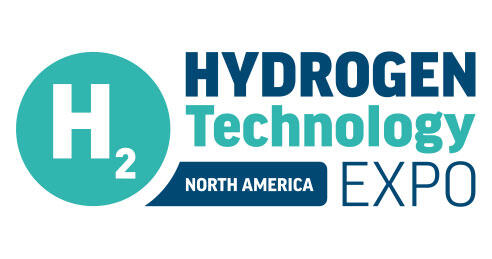Hydrogen Technology Expo North America
Houston, TX
United States

SwRI will be exhibiting at the Hydrogen Technology North America, booth no. 940.
Please join us for the following sessions:
Wednesday, June 25
10:35 a.m. – 11:00 a.m.
Mobility and Propulsion Systems
“Hydrogen ICE Engineering for Heavy-Duty Applications,” Ryan Williams
Hydrogen as an energy carrier is becoming more promising for the mining industry as an alternative decarbonization solution moving away from fossil fuel-based applications. Fossil fuel-based energy sources such as diesel, natural gas/propane, are the principal source of greenhouse gas emission in the upstream mining operations, especially for off-grid and remote mines. Mobile equipment, underground mining ventilation heating, and electricity generators in off-grid mines are the principal areas where hydrogen can be introduced. To safely deliver hydrogen to each one of those mentioned areas, a sophisticated infrastructure of distribution system is required to be installed. The current study provides a risk assessment overview from production/storage on a mine site to utilization of hydrogen for mobile equipment. It also highlights potential mitigation measures to improve high risk components in a mining practice. An update on hydrogen codes, standards and regulations gap analysis is also provided. To promote the adoption of hydrogen-based technologies as well as their relative infrastructure in a mining operation, appropriate standards are required to be developed to support safe utilization of hydrogen in mining practices.
CanmetMINING as one of Natural Resources Canada (NRCan) branches continues to promote its hydrogen roadmap for the Canadian mining industry. CanmetMINING’s hydrogen roadmap consists of three applicable research and development streams being:
- Assessment of the impact of Hythane on current underground mine ventilation heating infrastructure fed by the pipeline distribution network
- Hydrogen internal combustion engine (HICE) safety and emission assessment for engine certification process
- Hydrogen distribution and utilization infrastructure best practices; and supporting the development of relevant codes-standards-regulations
11:55 a.m. – 12:40 p.m.
Mobility and Propulsion Systems
“Hydrogen Internal Combustion Engines: Market Forecast and Outlook,” Ryan Williams, panelist
Hydrogen internal combustion engines (H2ICE) propose an alternative way to decarbonize heavy-duty vehicles, in opposition to the increasingly popular electric vehicles, with sales expected to grow in the coming years in North America. However, there are still barriers to scaling the market, including a higher overall total cost of ownership (TCO) compared to conventional ICE and the falling cost of FCEV infrastructure, fuel costs and policy. This panel discussion will assess these factors and provide an outlook into the H2ICE market.
Thursday, June 26
1:00 p.m. – 1:25 p.m.
Carbon Capture, Utilization & Storage, Michael Hartmann, chair
“Supercritical CO₂ Foam for Enhanced Oil Recovery and CCUS: Insights from Simulated Reservoirs,” Angel Wileman
Supercritical CO₂ (ScCO₂) foam injection offers significant advancements in enhanced oil recovery techniques over traditional surfactant-alternating-gas (SAG) methods by utilizing its unique properties, such as low viscosity and high diffusivity, to optimize oil displacement and facilitate long-term carbon storage. Our research explores the stability and mobility of ScCO₂ foam across diverse operational conditions to closely replicate real reservoir scenarios using a heterogeneous sand pack system. The experimental setup involves injecting CO₂ with a surfactant-brine mixture at flow rates of 90-180 ml/min and foam qualities from 65% to 97%, under constant pressures of 1,200 psig and temperatures ranging from 50°C to 150°C. This setup is crucial for evaluating foam performance at scales approximating pilot projects, enabling precise monitoring of viscosity, pressure, and temperature. Key observations include higher apparent viscosities at critical foam qualities near 95%, essential for maintaining structural integrity in porous media. Results show that increased flow rates enhance viscosity, potentially improving sweep efficiency in EOR operations, while lower temperatures correlate with greater foam stability under reduced thermal stress. Moreover, downflow conditions slightly elevate viscosity, likely aided by gravity, which is advantageous for vertical EOR injection strategies. These insights underscore the effectiveness of ScCO₂ foam in both EOR and CCUS, providing valuable data to refine foam injection techniques and optimize CO₂ sequestration in varying reservoir conditions.
Southwest Research Institute® (SwRI®) is a premier independent, nonprofit research and development organization. We offer multidisciplinary services leveraging advanced science and applied technologies across the hydrogen economy. To support the energy transition, SwRI works with industry and the government to advance hydrogen technology readiness and reliability along with carbon capture, utilization, and storage.
Visit the following links to learn about SwRI’s hydrogen research initiatives:
For more information, please contact Angel Wileman, Eloy Flores, or Michael Ross.
